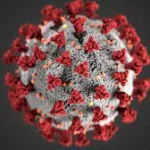Breakthrough Research in Photodynamic Therapy Offers New Hope for Melanoma Treatment
Melanoma remains one of the most aggressive forms of skin cancer, with over 300,000 new cases diagnosed worldwide annually. In Europe, the incidence of melanoma has been rising rapidly, highlighting the urgent need for advanced treatments. Fortunately, research in photodynamic therapy (PDT) is offering new hope, with light-activated dyes emerging as a promising avenue for targeted cancer cell destruction.
The Science Behind Light Therapy
Though medicine and light might seem unrelated at first, light therapy has been used since ancient times for various treatments, including seasonal depression, skin conditions, and even tissue regeneration. Today, researchers are harnessing the power of light to develop innovative treatments for certain types of cancer, including melanoma.
A team of scientists from the KTU Synthetic Organic Chemistry research group, led by Prof. Algirdas Šačkus, is working on new chemical compounds that enhance PDT. Their groundbreaking findings, recently published in the European Journal of Medicinal Chemistry, highlight how these light-activated dyes could be used to target and destroy cancer cells effectively.
Light-Activated Ointment for Cancer Cell Destruction
The chemical compounds developed by KTU researchers exhibit photocytotoxicity, meaning they become toxic to cells when exposed to light. According to KTU Chemistry Ph.D. candidate Gabrielė Varvuolytė, these substances, known as photosensitizers, generate reactive oxygen species upon light activation, leading to the destruction of cancer cells.
“These compounds can cause cancer cells or their organelles to shrink, expand, rupture their membranes, or undergo autophagy—a process where the cell essentially ‘eats itself,'” explains Varvuolytė.
To maximize effectiveness while minimizing harm to healthy cells, researchers carefully control the light dose. Blue light, specifically at a wavelength of 414 nm, was found to be optimal for activating the photosensitizers without damaging healthy tissues.
A Topical Approach to Treatment
For treating melanoma, researchers advocate for a topical approach rather than injections. The proposed method involves applying an ointment or cream containing the photosensitizer directly onto the tumor. After a set absorption period, the cream is removed, and the affected area is exposed to a specific type of light. This process may be repeated as necessary to eliminate any remaining cancer cells.
Reduced Side Effects Compared to Traditional Treatments
One of the most significant advantages of PDT over conventional treatments like surgery, chemotherapy, and radiotherapy is the reduced risk of severe side effects.
“Surgical procedures, chemotherapy, and radiotherapy can be physically taxing, and not all patients recover quickly,” says Varvuolytė. “In contrast, PDT has relatively mild side effects, such as localized burning sensations and increased sensitivity to light.”
Challenges and Future Prospects
Despite its promise, PDT faces challenges. Melanin, the pigment responsible for skin color, can interfere with treatment by absorbing light and neutralizing reactive oxygen species, potentially reducing the therapy’s effectiveness.
Before new photosensitizers can be approved for medical use, they must undergo rigorous testing. Current research is still in the early stages, with laboratory tests being conducted on cancer cells (in vitro). The next steps include in vivo studies, such as testing on mice with melanoma. Only after demonstrating safety and efficacy in these preclinical trials can clinical trials on humans begin.
“Clinical trials are essential to ensuring both effectiveness and patient safety,” Varvuolytė emphasizes. “The process is long and costly, spanning multiple phases, but it is necessary for regulatory approval and clinical application.”
Currently, the dyes synthesized at KTU and tested at Palacký University Olomouc remain in the preliminary research phase. However, their potential marks a significant step forward in the fight against melanoma.
Disclaimer: The findings discussed in this article are based on early-stage research and have not yet undergone clinical trials. While the results are promising, further testing and regulatory approvals are necessary before these treatments can be widely implemented. Patients should consult with healthcare professionals for the latest available treatments for melanoma and other cancers.











